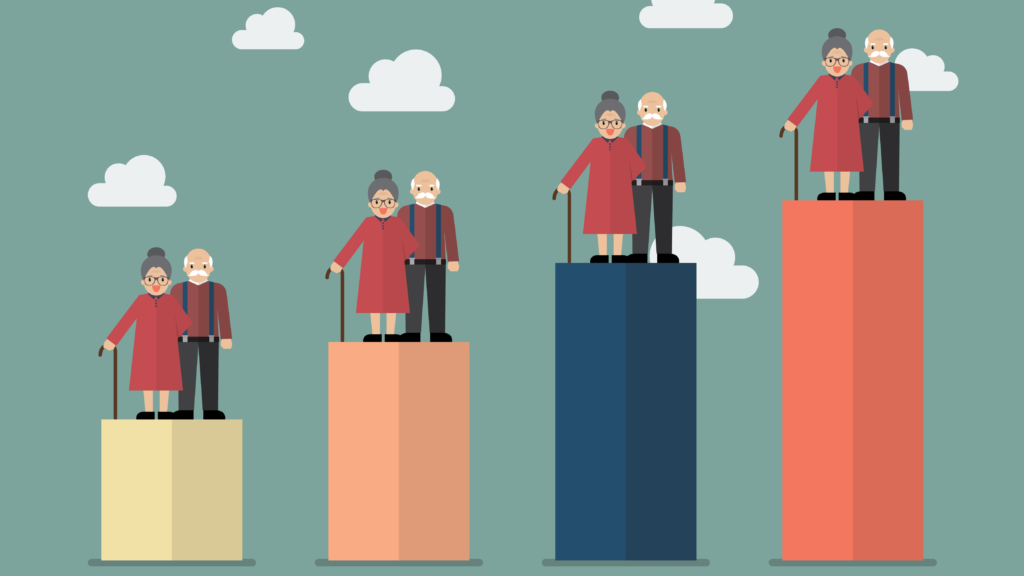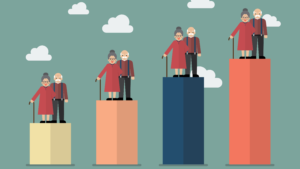The Silver Tsunami: Navigating the Challenges and Harnessing the Opportunities of an Aging Global Population
The Growing Demographic Shift and Its Dual Nature
The demographic landscape of our planet is undergoing a profound transformation. Declining birth rates coupled with increasing life expectancy are leading to a significant rise in the proportion of older individuals, a phenomenon often referred to as the “silver tsunami.” This aging global population presents a complex tapestry of challenges that demand innovative solutions and a fundamental shift in societal structures. However, woven within these challenges are also unique opportunities that, if embraced thoughtfully, can lead to a more inclusive, experienced, and potentially more prosperous future.

Strains on Healthcare and Social Security Systems
One of the most significant challenges posed by an aging population is the strain on healthcare systems and social security networks. As the number of older individuals increases, so too does the demand for healthcare services, long-term care facilities, and specialized medical expertise. This surge in demand can place immense pressure on already stretched resources, leading to longer waiting times, increased costs, and potential inequities in access to care. Simultaneously, traditional social security systems, often designed for a smaller elderly population supported by a larger working-age cohort, face the risk of financial instability as the dependency ratio – the proportion of non-working individuals to working individuals – shifts. This necessitates a re-evaluation of pension schemes, retirement ages, and funding mechanisms to ensure their long-term sustainability.
Economic Impacts: Workforce Shifts and the Rise of the Silver Economy
Furthermore, an aging workforce presents both challenges and opportunities in the economic sphere. On one hand, a shrinking labor force can lead to skill shortages, reduced productivity growth, and slower economic expansion. Businesses may struggle to find qualified workers, and innovation could be hampered by a lack of fresh perspectives. On the other hand, older workers possess a wealth of experience, institutional knowledge, and valuable skills that can be a significant asset to the economy. Retaining and retraining older workers, fostering age-inclusive workplaces, and promoting flexible work arrangements can help mitigate the challenges of a shrinking workforce while capitalizing on the experience of seasoned professionals. Moreover, the “silver economy” – the market for goods and services catering to the needs and desires of older adults – presents a significant growth opportunity for businesses that can understand and effectively serve this demographic.
Social and Cultural Considerations: Combating Ageism and Fostering Inclusion
Beyond the economic and healthcare implications, an aging population also presents social and cultural challenges. Ageism, the prejudice and discrimination against older people, can lead to social isolation, reduced opportunities, and a diminished sense of worth. Challenging negative stereotypes, promoting intergenerational understanding, and fostering inclusive communities are crucial to ensuring that older adults remain active and engaged members of society. Creating opportunities for social interaction, volunteering, and lifelong learning can combat isolation and empower older individuals to continue contributing their talents and wisdom.
Opportunities: Leveraging Experience and Driving Innovation
However, within these challenges lie significant opportunities for societal advancement. Older adults bring a lifetime of accumulated knowledge, experience, and perspective that can enrich communities and inform decision-making. Their wisdom can be invaluable in mentoring younger generations, contributing to civic engagement, and preserving cultural heritage. Encouraging the active participation of older adults in all aspects of society – from the workforce and volunteer organizations to political processes and community initiatives – can foster a more inclusive and well-rounded society. Moreover, the increasing focus on healthy aging and longevity is driving innovation in technology and healthcare. The development of assistive technologies, telehealth solutions, and personalized medicine tailored to the needs of older adults can improve their quality of life, enable independent living, and reduce the burden on healthcare systems. This focus on innovation not only benefits older individuals but can also lead to broader advancements in healthcare and technology that benefit society as a whole.
Embracing a Future with an Aging Population
In conclusion, the aging global population is an undeniable demographic shift that presents a complex interplay of challenges and opportunities. While the strain on healthcare and social security systems, potential workforce shortages, and the risk of ageism require careful consideration and proactive solutions, the wealth of experience, the potential of the silver economy, and the drive for innovation in healthy aging offer a path towards a more inclusive and potentially more prosperous future. Navigating this “silver tsunami” successfully will require a fundamental shift in societal attitudes, policies, and structures, embracing the contributions of older adults and fostering an environment where all generations can thrive together. By acknowledging the challenges and actively seizing the opportunities, we can transform this demographic shift from a potential crisis into a catalyst for positive societal evolution.










